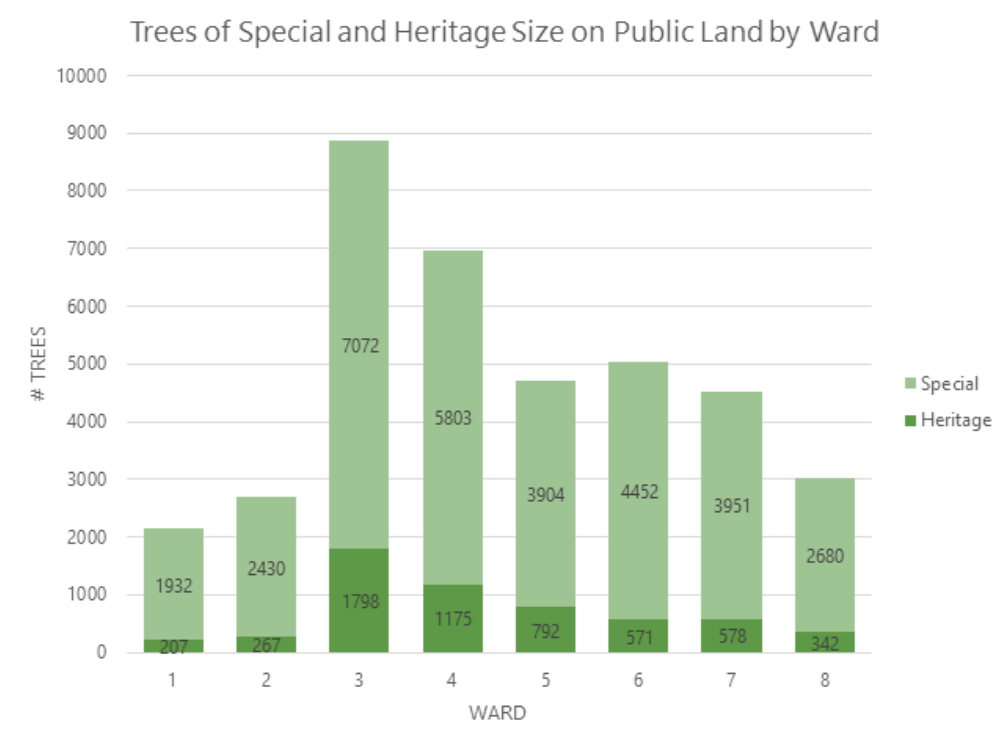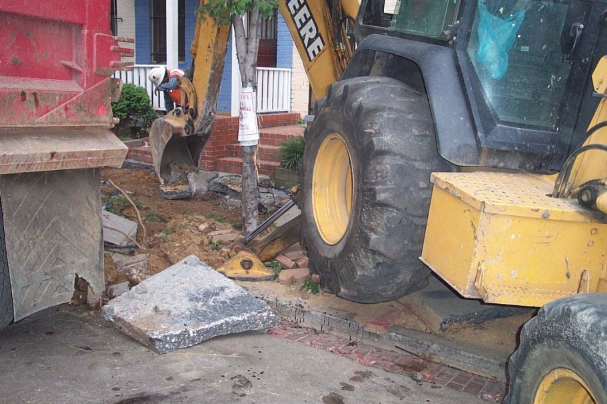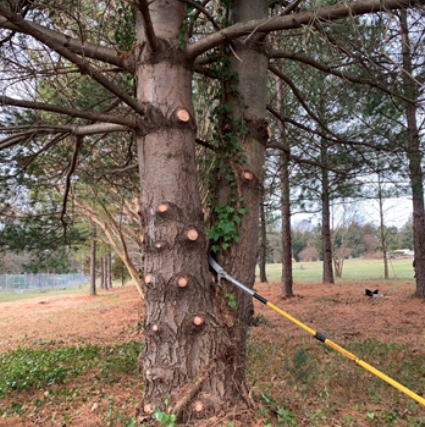DOEE Written Testimony of Dr. Jessica Sanders 01-16-2020
Councilmember Mary Cheh
Committee on Transportation and Environment
1350 Pennsylvania Ave, NW, Suite 108
Washington, D.C. 20004
January 16, 2020
Subject: Comments for the Department of Energy and Environment Performance Oversight Hearing
To Councilmember Cheh,
Thank you for the opportunity to submit comments regarding the Department of Energy and Environment’s performance. I am submitting these comments on behalf of Casey Trees. Casey Trees is a D.C. based nonprofit with the mission to “restore, enhance and protect the tree canopy of the nation’s capital” and we are committed to helping the District reach its 40 percent tree canopy goal by 2032.
Washington, D.C. is a leader in tree protection and sustainable development. The Mayor and Council’s commitments to tree canopy growth, sustainable development and overall environmental improvement is something to be commended. But now that the D.C. government has set these goals, it must amend its policies to ensure they can be achieved. In this last decade, Washington, D.C.’s tree canopy has grown; we have continued to exceed our tree planting goals and have increased our legislative and regulatory standards for tree protection. We are now only two percent away from hitting our tree canopy goal. But that last two percent is the hardest because trees do not grow according to our timelines. It can take decades for a tree to fully mature. During that time, we must make sure that we are doing everything in our power to ensure that, in the harsh urban environment District trees grow in, they are given every chance to survive. There are 2.4 million trees in Washington, D.C. Trees that foster community connections, cool our homes and streets, beautify our blocks and promote outdoor activity. All together proving our continued dedication to Pierre L’Enfant’s vision of a green D.C.
But it is hard to fully celebrate our wins when some of our mature trees are still at constant risk for removal. The Urban Forest Preservation Act, and the subsequent Tree Canopy Protection Amendment Act, made great strides in protecting D.C.’s urban forest. But it only protects private trees, leaving our street trees, the trees in our parks and those at our schools and libraries at risk for removal. There are over 162,000 trees owned by the District, 23 percent of which should be protected under our urban forestry law1. We are asking the D.C. Council to expand the Urban Forest Preservation Act to protect ALL trees that are 44 inches or larger, not just trees on private land. The trees in our public spaces are one of our city’s greatest assents, but we will never be able to fully realize our urban forestry goals if we are only protecting some of our trees. Amending the D.C. Code is difficult, but with an average of over 2,300 public trees removed every year2, it is imperative that we take the steps now to make this change.
We understand though, that not all trees can be saved and, because we manage our urban forest for our citizen’s safety first, when a tree dies or become hazardous, it is removed. Because of this, we are asking DOEE, in conjunction with the Department of Transportation’s Urban Forestry Division, to develop a tree canopy replacement ratio. It can take a lifetime for a tree to grow to maturity, but only a few minutes for it to be cut down and, even if a new tree is planted for every one removed, there is no guarantee that tree will survive the constant stressors that come with living in an urban environment. Between soil compaction, injury during construction and harmful pruning practices3, urban trees face many obstacles for growth. A tree canopy replacement standard, rather than simply a tree replacement standard, will help us ensure that, when a tree must be removed, the entire existing canopy is replaced. Casey Trees recommends a standard of at least three new trees for every one removed. This ratio, based on the American National Standard for Tree Care Operations (ANSI) standard, will help us remain on track to reach our 40 percent tree canopy goal by 2032. However, we urge DOEE and UFD to choose a higher replacement ratio to account for the limits in tree growth (such as limited soil space) and survivability in an urban environment.
But we cannot just mandate that a new tree be planted. We must also make sure we are enforcing tree maintenance and retention. Many of our existing environmental, sustainability and green building policies include some form of planting, maintenance and existing vegetation retention, but these things must be done in conjunction with one another. DOEE is responsible for approving many of the environmental protection plans, while the Department of Transportation is responsible for authorizing tree removal permits and the Office of Zoning is responsible for Zoning Regulation compliance. This division of responsibilities is important because it allows subject matter experts to review the various pieces of a development plan, however, it can also lead to agencies being siloed in their decision making. We ask that DOEE increase collaboration with the Department of Transportation and the Office of Zoning when reviewing development plans to ensure that proposed developments are in compliance with all District plans, policies and regulations. Increased communication between these and other agencies will ensure that developers are not only meeting their minimum standards for tree planting, maintenance and retention throughout the development process, but that they are forwarding the development goals set out in Sustainable D.C. 2.0, Climate Ready D.C., Resilient D.C. and the D.C. Comprehensive Plan.
This goal can also be supported by updating existing codes that govern tree protection to reflect the District’s sustainable development vision. One such code is the Green Area Ratio (GAR). The goal of the GAR is to ensure that a certain percent of permeable land is retained whenever there is significant development. However, the existing standard gives mature trees the same value as permeable pavement4. The overall environmental value of a mature tree far outweighs the value of permeable pavement but having a policy that only focuses on one metric, not the entire value of a resource, means that these two things are considered equal. This has led to the removal of countless trees and other vegetation that provide multiple environmental, social and health benefits but can be considered more expensive than other GAR landscape elements of equal or greater value. We request DOEE review this and other environmental standards and amend them to look at the entire value of a resource. Amending these standards so that existing environmental resources are given higher value will help the District meet its development goals while retaining the resources that bring the most benefits to the community.
But protecting these benefits should not be limited to private developments. We ask DOEE to work with the Department of General Service and the Department of Parks and Recreation on landscape designs for parks and recreation center redevelopments to incorporate existing vegetation and go above and beyond city requirements. DGS has a goal of greening every building owned by the District and we encourage them to use existing vegetation, such as mature trees, and green infrastructure as a tool to do this. Incorporating these and other natural elements both indoors and out will create spaces that are good for sustainability, good for our environment and good for ourselves. Additionally, we ask DOEE, in collaboration with DDOT, DGS and DPR, create an organization flow chart showing who cares for the trees in different District spaces. Trees are most vulnerable the first three years after planting but continue to need care throughout their lives. Unfortunately, it is hard to hold agencies accountable for tree care when it is not clear who is responsible for that tree. Creating a chart that clearly identifies responsibility will help residents better report when there is need for tree care and hold the different agencies accountable for the trees within their jurisdiction.
As we think about our tree canopy goals, we must build on our successes. Washington, D.C. is a leader in environmental policy, and DOEE has been integral to this. By updating and amending our existing policies to place a stronger focus on the entire value of our trees, ensuring that all trees are created equal under the law and encouraging continued agency collaboration to continue to grow sustainable development throughout the District, we can achieve more than just our tree canopy goal.
Thank you again for the opportunity to comment on the Department of Energy and Environment’s 2019 performance. If you have any questions regarding our comments or would like further explanation, I can be reached at 202-349-1905 or jsanders@caseytrees.org.
Sincerely,
Dr. Jessica Sanders
Director of Science and Policy
Casey Trees

Figure 1: District Owned Trees of Special and Heritage Tree Size

This includes trees on land owned and/or maintained by UFD, DPR, DGS, DCHA and DCPS

Figure 2: Pictures of Urban Tree Stressors – Compact Soil

Tree injury during construction – provided by the DDOT Construction Guidelines for Tree Protection

Poor Pruning